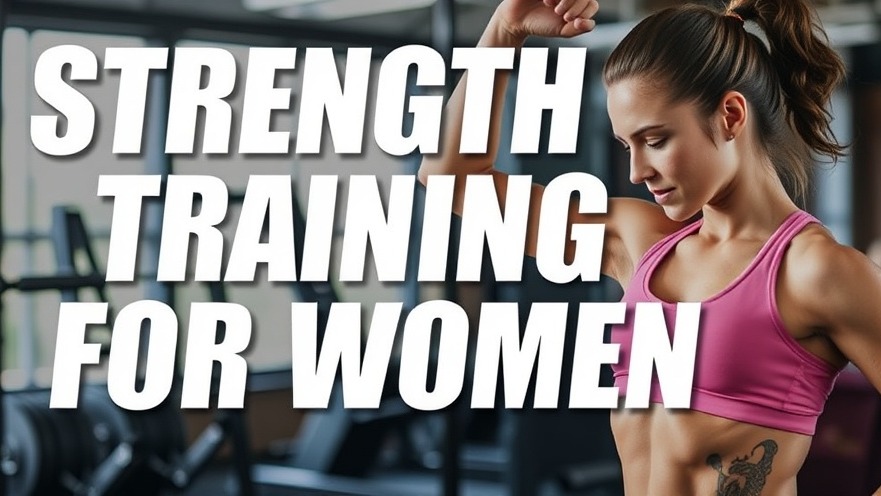Workout Programs
Unlocking Proper Chest Training: Overrated and Underrated Exercises
0
Understanding Chest Exercise Ratings: Overrated vs. UnderratedIn the ever-evolving landscape of fitness, it’s critical for trainers and enthusiasts alike to know which exercises yield the best results. A recent discussion featuring Dr. Mike and IFBB Pro Jared Feather offers invaluable insights into the most and least effective chest exercises. From outdated machines to surprisingly beneficial movements, the duo breaks down common misconceptions surrounding these workouts.In 'The Most OVERRATED and UNDERRATED Chest Exercises', the discussion dives into effective chest training, exploring key insights that sparked deeper analysis on our end.
Why Pec Fly Machines May Not Be Worth the HypeThe pec fly machine, often viewed as essential for targeting the chest, has been labeled overrated by experts like Dr. Mike and Jared. Although the machine is popular in many bodybuilding circles, the focus on peak contraction limits its effectiveness. Instead, free-motion alternatives such as cable systems can provide a better stretch and muscle engagement. The pec fly might seem attractive, but its prominence doesn’t necessarily translate to superior results.The Pitfall of the Incline Dumbbell PressBoth experts agree that the incline dumbbell press is similarly overrated due to its association with ego-driven lifting. Many bodybuilders misuse this exercise by attempting to lift excessive weights without mastering proper form. While it has the potential to be an excellent chest workout with controlled eccentric movements, the misuse often leads to less-than-ideal outcomes.Keen Insights on the Low Incline Cambered Bar Bench PressOn a more positive note, the low incline cambered bar bench press has emerged as an underrated exercise. This movement encourages a controlled stretch, allowing for greater hypertrophy and safety. Due to its unique design, trainers can progress effectively while minimizing the risk of injury, which is essential in any workout program.Evaluating Dips: A Divisive ExerciseTraditional dips sparked a debate, with Jared championing their value as an underrated exercise while Dr. Mike saw them as overrated. Dips effectively engage different regions of the chest, but they do require a certain level of experience and control that can overwhelm novice lifters. Understanding one’s body mechanics can ensure that dips are performed safely and effectively, maximizing muscle gains.The Underrated Power of Deficit Push-UpsDeficit push-ups surfaced as another underrated movement. Though often dismissed in favor of heavier weights, these push-ups can significantly improve core stability and increase chest strength, making them a powerful addition to any workout routine. They also offer a scalable challenge for athletes at various ability levels.Returning to the Basics: Barbell Bench PressThe discussion took a noteworthy turn with the barbell bench press being noted as underrated in today’s fitness climate. Despite facing criticism for injuries linked to poor technique, the barbell press remains a powerhouse for building chest strength when executed correctly. In fact, many trainers find that adhering to safer practices can enable more effective and risk-free workouts.Debunking Vanity Exercises: Cable CrossoversThe cable crossover is viewed critically by many experts, labeled as overrated due to its flashiness and minor contribution to muscle growth. While visually engaging, it often consumes energy that might be better allocated to more effective exercises. The focus should be redirected towards movements that yield real results rather than just creating visually appealing workouts.Challenging Popular Equipment: Hammer Strength PressFinally, the Hammer Strength press came under fire as a piece of equipment that many deem overrated. Critics argue that its resistance profile—which is easy at the bottom but challenging near the top—doesn’t align with effective chest training principles. While its popularity persists, coaches encourage gym-goers to explore alternative options that deliver consistent, safer results.In conclusion, the session between Dr. Mike and Jared offers more than just a rating of chest exercises; it cultivates essential conversations about prioritizing safety, technique, and meaningful results in the gym. Understanding the strengths and weaknesses of various exercises enhances trainers' ability to craft effective workout programs that truly benefit clients. Consider revisiting some of these insights and integrating underrated exercises into your regimen for optimal chest development.As we navigate the world of fitness, it's vital to question conventional wisdom and continually adapt our approaches. The journey toward stronger, healthier physiques isn't just about heavy lifting; sometimes, it's about smart choices and the right techniques.Interested in further optimizing your training programs? Explore innovative methods and stay updated with the latest fitness trends to elevate your gym experience.

 Add Row
Add Row
 Add
Add

 Add Row
Add Row
 Add Element
Add Element








 Add Row
Add Row
 Add
Add

